Search Results for Tag: Matthias Baumann
Matthias Baumann (currently in Nepal): “Organized chaos”
He did not hesitate. When the first reports on the devastating earthquake in Nepal came in, the German doctor and climber Matthias Baumann packed his stuff. The trauma surgeon from the town of Tuebingen flew to the disaster area in order to help. For more than a week, the 43-year-old worked in a hospital in the mountain town of Dhulikhel, 25 kilometers east of the capital Kathmandu. Before he will fly home on Sunday, he wants to make another trip to the countryside to get an overview about the situation there and to help wherever he can.
Matthias, you have now been in Nepal for one and a half week. How long did you work each day?
We started in the morning at 8 a.m. with a meeting of all senior doctors and nurses. We discussed what was needed at the hospital and at the ambulance stations in the countryside. Then we got going. There were no prescribed working hours. Everyone worked as long as he was able to do so. Mostly I left the hospital at 10 or 11 p.m.
![]() read more
read more
Everest season in Tibet is finished
First of all: Compared to the suffering in Nepal after the earthquake of last Saturday – now more than 5,000 deaths and 10,000 injuries have been counted – it seems almost insignificant what is happening on the Tibetan north side of Mount Everest. But I also give reports on the consequences of the terrible tragedy in Nepal for the climbers in the region – and there are still several hundred mountaineers in Tibet, including many Sherpas from Nepal. All will go home now. Whether they like it or not, they have to. “It’s official: Everest is closed for this season”, expedition leader Dominik Mueller, head of the German operator Amical alpin, writes from “Chinese Base Camp” on the north side of Mount Everest. Yesterday Mueller had abandoned his expedition, one day before the decisive meeting of the expedition leaders with representatives of the China Tibet Mountaineering Association (CTMA) in Base Camp at 5,150 meters.
![]() read more
read more
Baumann: “Families of Everest victims still need help”
There was no climbing on Mount Everest on this Saturday. At the Base Camp at 5,300 meters, more than 300 western climbers and an equivalent number of Sherpas commemorated the 16 Nepalis who had been killed in the avalanche in Khumbu Icefall exactly one year ago. It was the worst avalanche disaster in the history of Everest. The German climber and physician Matthias Baumann had witnessed the tragedy at the Base Camp. Later he visited the families of the victims and launched a relief campaign for them. In March, the 43-year-old trauma surgeon from the city of Tuebingen traveled again to Nepal. He distributed money to the families of the victims and launched financial sponsorships to guarantee the education of the avalanche victims’ children.
Matthias, a year ago, you were at the Base Camp of Mount Everest, when the avalanche released in the Khumbu Icefall. You were among the doctors who first treated the injured climbers. Are you still thinking of what happened on 18 April 2014?
![]() read more
read more
German doctor wants to help Sherpa families in the long term
18 April has changed many things: on Mount Everest, in the lives of the families of the 16 avalanche victims – and also for Matthias Baumann. The 42-year-old trauma surgeon from the German town of Esslingen was the expedition doctor in the team of the Argentine twin brothers Damian and Willie (Guillermo) Benegas and actually wanted to climb Everest in his second attempt, on the Nepalese south side. In 2011, his first attempt on the Tibetan north side had failed at 8600 meters: When he wanted to change his oxygen bottle at the Second Step, the key point of the normal route, Matthias realized that his Sherpa had packed an empty instead of a full bottle.
Three years later, this spring, Baumann climbed through the Khumbu Icefall, on the day before the avalanche. “I knew that avalanches had been coming down from the West Shoulder of Everest for four or five years. Up there, the seracs are threatening”, Matthias told me. Even if the fun at climbing gained the upper hand, the respect remained. “I was always looking up to the seracs.” On the following day, the Khumbu Icefall became a death trap for 16 Nepalese climbers. With other physicians, the German doctor took care of the injured climbers who were brought down to the base camp. After the end of the expedition Matthias visited almost all the families of the Nepalese who had lost their lives – and launched a fundraiser for them.
![]() read more
read more
Help for families of avalanche victims on Everest
Waiting for the calm after the storm. Currently the wind is blowing strongly in the summit region of Mount Everest – with speeds up to 60 knots (about 110 km per hour). A summit attempt of one of the about ten teams on the Tibetan north side of the mountain is out of question. Not until 16 May a good weather window with low wind is expected. On the south side of Everest, according to the U.S. expedition leader Eric Simonsen, the “Icefall doctors” brought down their ladders and ropes from the Khumbu Icefall. Until next season, the material is deposited in a storage in Gorak Shep, the last permanently inhabited small village near Mount Everest at 5200 meters. Thus there will be definitely no climb to the 8850-meter-high summit from the Nepalese side this spring. This week in Kathmandu, the Japanese climber Ken Noguchi presented on behalf of his environmental protection organization “Seven Summits Actions for Sustainable Society” a donation of $ 100,000 to Ang Tshering Sherpa, president of the Nepal Mountaineering Association (NMA).
![]() read more
read more



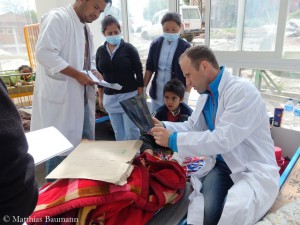

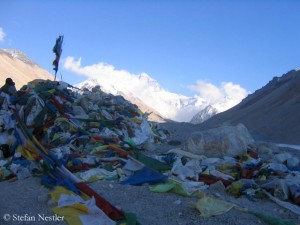
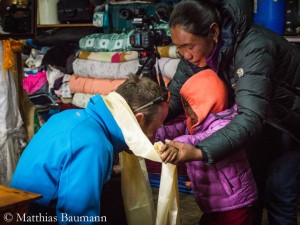
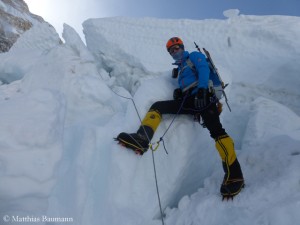
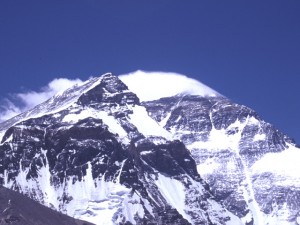

Feedback